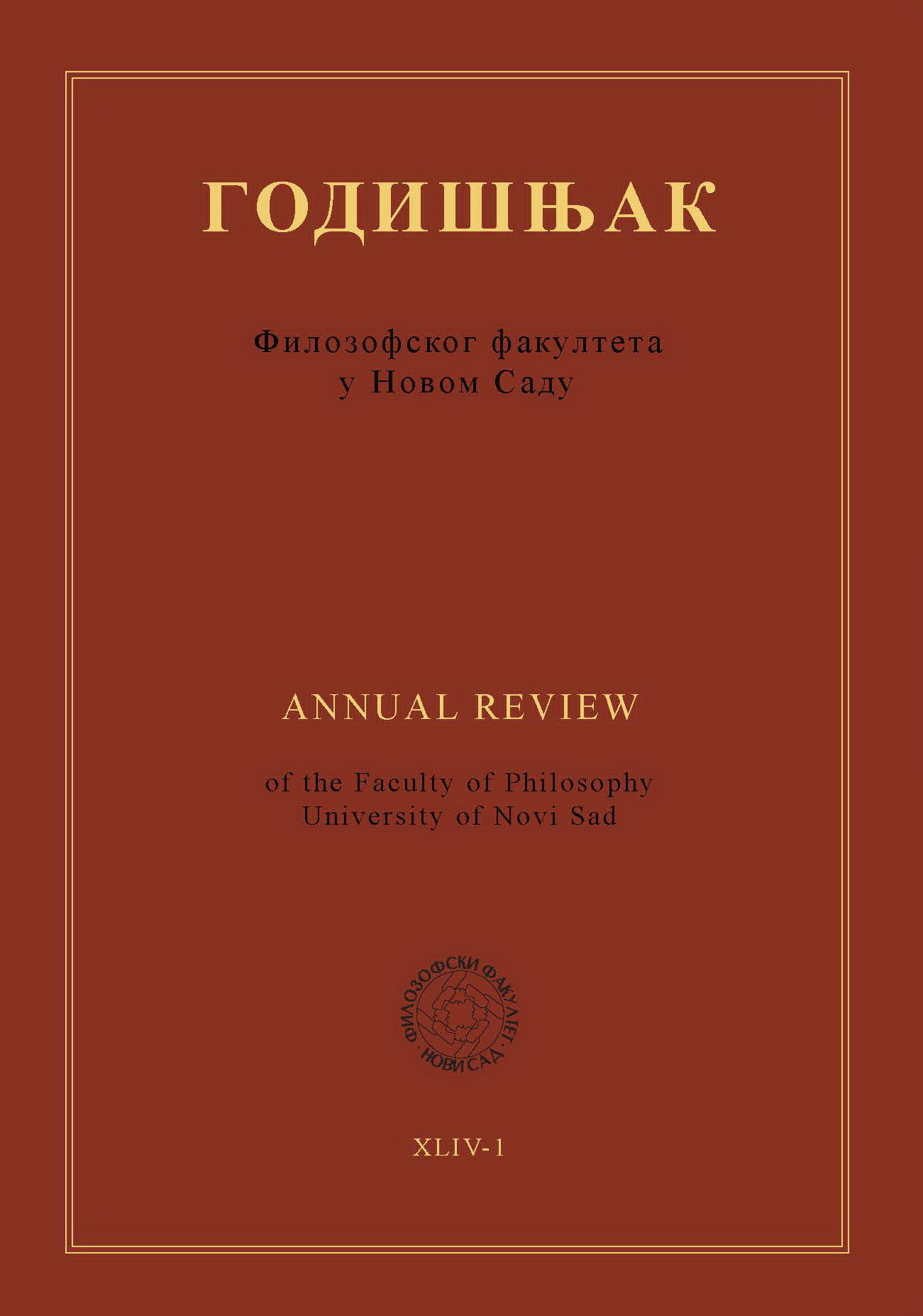LITERARY NAMING AND TRANSLATION OF NAMES IN NÁNDOR GION’S “BAND NOVELS”
Main Article Content
Abstract
In the creative course of the literary works naming becomes emphasized, the name system of certain writings or authors is often key to interpretation. The study examines the problems of literary naming and translation of names in Nándor Gion’s four-volume novel that can be rated to the genre of „band novels” as well. The novels relate in chronological order, through four seasons a child band's adventures: the holiday novel Kárókatonák még nem jöttek vissza (1977) (Cormorants has not come back yet), the Sortűz egy fekete bivalyért (1982) (Volley for a black buffalo) continues the plot in autumn, Az angyali vigasság (1985) (The angelic feast) in winter, when the children evoke the habits of the Christmas holiday circle, and they get involved in the adults' things by saying the angelic feast, the Zongora a fehér kastélyból (2003) (Piano from the white castle) closes the story in spring. Beside the identical sites, back and forth referring, repetitive motives and passages, the four novels are combined with each other by the recurrent characters as well. The study classifies the name theme of the novels (personal names, animal names), examines the extra meanings they carry (e.g. demonstrate variegated nationality of the country, indicate the change in the community's nationality combination), their portrayal and stylistics role, the process of naming becoming thematised in the texts (e.g. the development of certain nicknames). We can assign Gion’s characters’ names into eight categories: with full name (with a surname and first name), with surname and nickname, with surname and with a drop cap, figures named with surnames, names completed with an occupation name, names completed with a constant attribute, names completed with constant attribute and an interpretative attribute, and telling names. One of the most frequently and for the longest time used literary devices is the telling name that is selected by the author for his hero in the way to picture the person’s physical or spiritual property by its meaning or word mood. The novel texts reflect to the formation of certain names, the act of naming and the name usage on diverse places. Apart from the identifying-nominating function and characterization of the characters, the telling names have got plot forming role as well. The study examines translator procedures the help of which the Serbian translator translated the names in order to rise the same associations in the target language reader, as in the original text reader.
Downloads
Article Details
References
Gion, N. (1985). Az angyali vigasság. Novellák. Újvidék: Forum.
Gion, N. (1999). A kárókatonák még nem jöttek vissza. Budapest: Osiris.
Gion, N. (2003). Zongora a fehér kastélyból. Forrás, 4, 5–47.
Gion, N. (2016). Kormorani se još nisu vratili. Prev. Jolanka Kovač. Srbobran ‒ Novi Sad: Spomen kuća Nandora Giona – Prometej.
Gion, N. (2016). Anđeosko veselje. Prev. Jolanka Kovač. Srbobran ‒ Novi Sad: Spomen kuća Nandora Giona – Prometej.
Gion, N. (2018). Rafal za jednog crnog bivola. Prev. Jolanka Kovač. Srbobran ‒ Novi Sad: Spomen kuća Nandora Giona – Prometej.
Árpás, K. (2008). A Gion-művekben szereplő személyek listája. In: Az építő-teremtő ember. Gion Nándor életművéről. Szeged: Bába Kiadó, 235‒295.
Andrić, E. (2017). Átváltási műveletek Gion Nándor Virágos Katona című művének fordításában. In: Fordításkritka – kritika prevoda. Újvidék: Bölcsészettudományi Kar, 179‒208.
Bárczi, Zs. (2013). Alicek, Alizok és Évikék. In: Bauko, J.‒Benyovszky, K. (szerk.): Tulajdonnevek a fordítás és a kétnyelvűség kontextusában. Nyitra: Konstantin Filozófus Egyetem, 176‒183.
Benyovszky, K. (2013). Fordított névsorolvasás. Az Egyperces novellák irodalmi névadása a szlovák fordítás tükrében. In: Bauko, J.‒Benyovszky, K. (szerk.): Tulajdonnevek a fordítás és a kétnyelvűség kontextusában. Nyitra: Konstantin Filozófus Egyetem, 133‒146.
Elek, T. (2009). Ifjúsági regények felnőtteknek. Gion Nándor: Angyali vigasság, Zongora a fehér kastélyból. Forrás, 1, 52‒57.
Galuska, L. P. (2008). A Pál utcai fiúk értelmezésének kérdései a magyar gyermekirodalmi kutatásban. Könyv és nevelés, 3. http://epa.oszk.hu/01200/01245/00039/index.htm
Hegedűs, O. (2013). Tulajdonnév-használat Terry Pratchett Korongvilág-regényeiben. In: Bauko, J.‒Benyovszky, K. (szerk.): Tulajdonnevek a fordítás és a kétnyelvűség kontextusában. Nyitra: Konstantin Filozófus Egyetem, 167‒175.
Horváth Futó, H. (2013). A Keglovics utcai történetek továbbíródásai. Létünk, 2, 97–108.
Hózsa, É. (2012). Irodalmi névadás és műfordítás. In: Bene, A. (szerk.): A magyar nyelv a többnyelvű Vajdaságban. Állandó és változó a nyelvben. Szabadka: MTTK, 98‒111.
Jenei, T. (1998). Az ifjúsági nyelv mint stíluseszköz Gion Nándor A kárókatonák még nem jöttek vissza című regényében. Módszertani Közlemények, 2, 74–77.
Kabdebó L. (2011) Kárókatonák a megdicsőült éjben (Életkeresés köd-országban Gion Nándor szövegei segítségével). Forrás, 2, 18‒28.
Katona, E. (2005). Beszélő nevek, névhangulat és fordítás. Hungarológiai Közlemények, 2, 102‒109.
Kovalovszky, M. (1934). Az irodalmi névadás. Budapest: Magyar Nyelvtudományi Társaság.
Kurcz, Á. I. (2016). Sortűz egy elveszett országért. A kisebbségi lét szimbólumai Gion Nándor „ifjúsági” regényében. Hitel, 1, 114‒128.
Prieto, L. J. (2005). Funkcionális szemiológia. In: Horányi Ö.‒Szépe Gy. (szerk.): A jel tudománya. Budapest: General Press, 151‒159.
Slíz, M. (2006). A beszélő nevek mint a posztmodern eszközei. Magyar Nyelvőr, 3, 290‒301.
Slíz, M. (2014). Az irodalmi nevek mint szignálok üzeneteinek kiválasztása. In: Bauko, J.‒Benyovszky, K. (szerk.): A nevek szemiotikája. Nyitra‒Budapest: Konstantin Filozófus Egyetem, 217‒226.
T. Somogyi, M. (2015). Az írói névadás vizsgálata. In: Farkas, T.‒Slíz, M. (szerk.): Magyar névkutatás a 21. század elején. Budapest: Magyar Nyelvtudományi Társaság‒ELTE Magyar Nyelvtudományi és Finnugor Intézet, 207‒226.
Soltész, K. (1979). A tulajdonnév funkciója és jelentése. Budapest: Akadémiai Kiadó.
Szajbély, M. (1984). Gion Nándor: Sortűz egy fekete bivalyért. Életünk, 10, 1118–1119.
Tarján, T. (2001). Gion Nándor: A kárókatonák még nem jöttek vissza. In: Komáromi Gabriella (szerk.): Kortárs gyermekkönyvek. Budapest: Ciceró, 128‒136.




